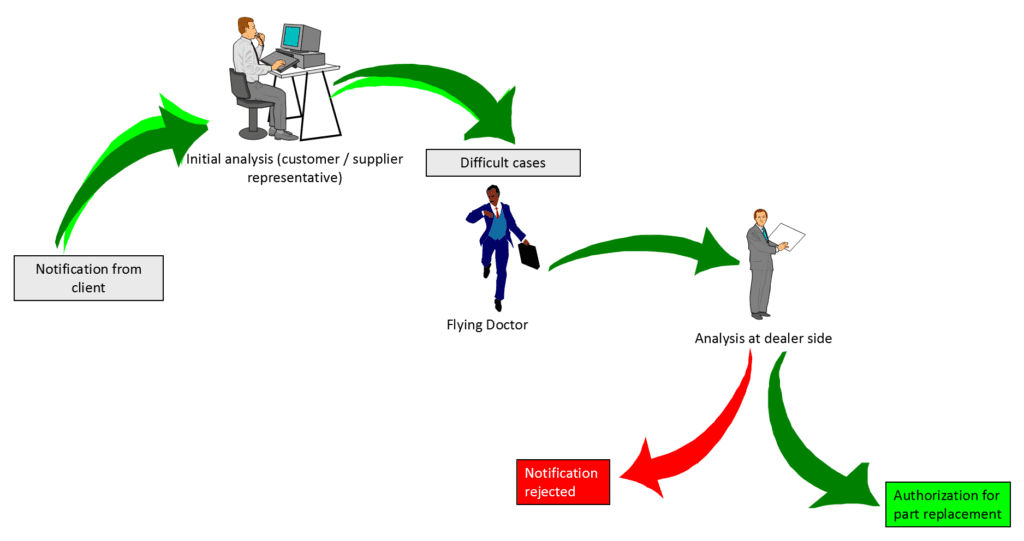Flying Doctor (Man in the Van) activity in automotive warranty performance can play strategic role in improving main KPI’s (for example: IPTV – incident per thousand vehicles, TF – technical factor , CPU – cost per unit, number of warranty returns).
The most important advantages are listed below:
- Their activity allows early diagnosis of the problem and its analysis directly at dealer side. By this approach organization doesn’t have to involve their resources if this person will be hired outside of organization. See below sketch.

Fig. 1. Where should be applied Flying Doctor. - From the point of view of the Technical Factor defining results for analyzed part with an unconfirmed defect, have an impact on the percentage of rejected parts that reduces the supplier’s share in the involved costs
- Before visiting the dealer, the Flying Doctor must have complete knowledge about the part that will be analyzed. This includes providing all necessary information based on traceability.
- Thanks to this, it is possible to automatically reject the complaint in case of identifying the exchanged components outside of organization plant (see example on the next page).
- Flying Doctor must be equipped with full diagnostic equipment provided by the organization’s plant (software, laptop, stethoscope, camera, optionally part for replacement).
Flying Doctor – How to start the implementation
When an organization considers activating such an approach, it’s important to ensure that Flying Doctors verify the components directly at the dealers. To prepare for this, they should first undergo dedicated training at the plant producing the specific components, covering the following areas:
- Training on the production line to familiarize the Flying Doctors with the assembly processes.
- Product training (for example performed by product support engineers)
- Training of previously recorded quality problems covering both 0-km and field returns.
- Training in electrical diagnostics (department dealing with the analysis of electrical problems); if the organization produces electronic components
- Optionally training in mechanical diagnostics, which carries out road tests of returned components in the car environment.

They can be also used in another areas as well to support organization. At this point, it’s worth remembering that the Flying Doctor can also verify how the dealer handles service parts. This ensures that parts are properly exchanged for defective components.
It is important in the case of non-compliance for problems that occur within a short period of time after the installation in the car service part.
The Flying Doctor can conduct training at a specific dealer service station in such situations. As a systemic action, the OEM can also send information to dealer service stations on the correct way to handle components. Base on this we’re showing to client our proactivity which has positive impact on long term relationship building.
Download our free ebook Automotive Warranty Management – Practical Guideline for Suppliers



